Are you ready to escape into the heart of nature’s untouched beauty? Washington state is home to remote and awe-inspiring areas that promise an adventure like no other. From rugged mountains and pristine lakes to moss-covered forests, discover the eight most remote spots in Washington and how to get there safely.
1. Hidden Lake Fire Lookout
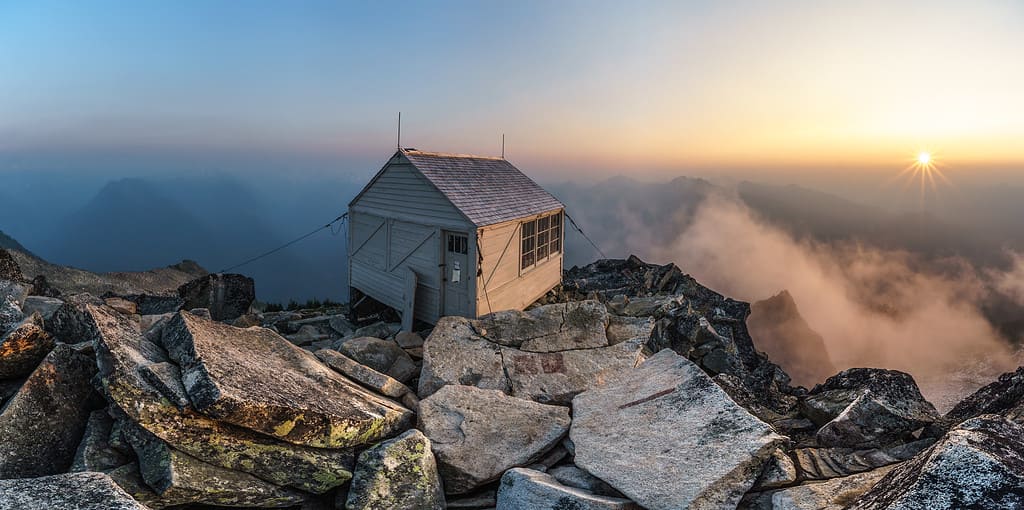
At Hidden Lake fire lookout hikers have access to rugged mountain views and a unique camping shelter.
©Nick Archibald / CC BY-SA 4.0 – License
Hidden Lake Fire Lookout, perched atop the rugged peaks of the North Cascades in Washington State, offers a breathtaking panoramic view that will leave you in awe. After a rewarding hike, you’ll reach the overlook, where astounding vistas of several snow-capped mountains and the valley below will greet you. This lookout promises a unique adventure for outdoor enthusiasts, offering a glimpse at one of the only remaining remote fire lookouts that once dotted the peaks by the hundreds.
Discover the Hidden Lake Fire Lookout
The trail to the lookout is a challenging yet rewarding nine-mile round-trip trek through lush forests, wildflower meadows, and rocky slopes. It is considered a strenuous hike because of its 3,340 foot elevation gain. Upon reaching the summit and the lookout, you are greeted by a mesmerizing panorama. Lucky adventurers can experience the magic of camping overnight in the historic fire lookout perched on the cliff’s edge. Camping in the fire lookout is on a first-come-first-served basis.
Plan your trip wisely, considering the seasonal weather changes. Hidden Lake Lookout is open all year but subject to road and trail conditions. Summer and early fall are ideal for a visit when the trails are accessible and the views are most stunning. Don’t forget to bring water, snacks, proper hiking gear, and a camera to capture the incredible scenery. Hidden Lake Fire Lookout is a hidden remote gem in Washington State.
How to Get There
From Darrington, WA, turn right onto Suiattle River Road (Forest Road 26). This road is a gravel forest service road. Drive along Suiattle River Road (FR 26) for approximately 12.4 miles. Look for signs indicating the Hidden Lake Lookout Trailhead. The trailhead will be on your left. Park your vehicle at the trailhead and start your hike on the Hidden Lake Lookout Trail.
2. Sucia Island Marine State Park
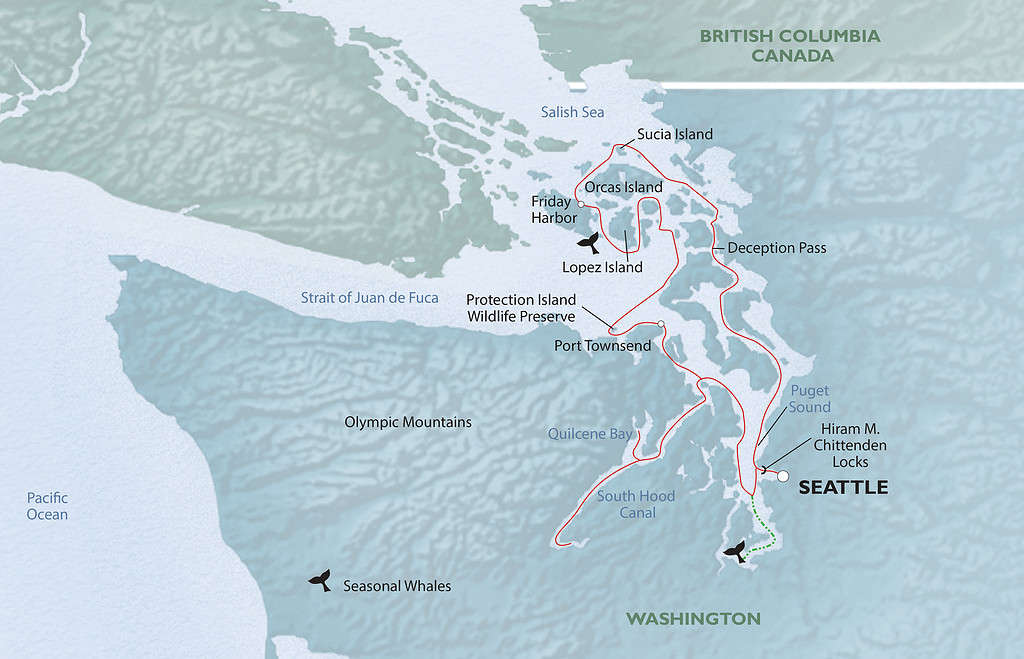
Susia Island is one of the most secluded spots to in the San Juan Islands, Washington.
©Attributed to Un-Cruise Adventures, CC BY-SA 3.0, via Wikimedia Commons – License
Enjoy activities like kayaking, crabbing, and beachcombing in this 814-acre state park. There are no services or accommodations on the island, so camping is a must, with various campgrounds scattered throughout the island. Hiking trails wind through the island, offering stunning vistas and access to hidden coves.
The island’s campgrounds, like Echo Bay and Shallow Bay, provide a unique experience, allowing you to fall asleep to the soothing sound of lapping waves and wake up to breathtaking waterfront views.
You can take to the waters with your kayak to explore the island’s intricate shoreline, coves, and hidden sea caves. The calm, sheltered bays are perfect for kayakers of all skill levels. Paddle along the rugged coastline, where spotting marine life like seals is common. You don’t have to own a kayak to enjoy Susia Island’s waters though — there are kayak and canoe rental companies based out of Orcas Island that will deliver a rented watercraft to you.
How to Get There
Getting to Susia Island is an adventure in itself. The Washington State Ferry system does not go to Susia Island, so you must take a water taxi or go in your private boat. Water taxis depart from various points along the San Juan Islands, making it easy to access Sucia’s remote beauty.
3. Ross Lake + Diablo Lake

Diablo Lake offers the adventurous traveler isolated camping sites that are only accessible by boat.
©Bob Collowan / CC BY-SA 3.0 – License
Nestled in the heart of North Cascades National Park, Ross and Diablo Lakes offer tranquility, adventure, towering peaks, and pristine waters. These glacial-fed lakes stretch for miles through canyons and valleys. This area is a haven for kayakers, boaters, and nature enthusiasts. Ross Lake is one of the most remote spots in Washington because it isn’t accessible by road on the United States side — only by hiking or boating in from Diablo Lake.
Lake Diablo serves as the primary reservoir for the Diablo Dam, which regulates water flow downstream. North of Diablo Lake sits Ross Lake – one of the largest reservoirs in the Pacific Northwest. The Ross Dam rises 540 feet above Diablo Lake, creating a teal-colored lake that stretches over 20 miles long and crosses the Canadian border. Together, these two lakes offer miles of serene wilderness.
Discover the remote beauty of the Lakes
For a multi-day journey on both lakes, launch a kayak or canoe from the Diablo Lake boat dock or Colonial Creek Campground and navigate your way through the teal-colored water to the northern tip of the lake. Here, you will remove your boat, transfer it into a large truck, and ride up a steep road to Ross Lake. From June through October, the Ross Lake Resort offers an exciting portage service between the lakes — contact them ahead of time to get the schedule.
There are numerous camping opportunities along the shores of both lakes, with designated campsites, making it easy to extend your stay and immerse yourself in the tranquility of the North Cascades. Contact the North Cascades National Park Service for information about camping permits and reservations.
Alternatively, visitors can take a water taxi from Diablo Dam to the Ross Lake portage site. After portaging up to Ross Lake, another water taxi will take you to Ross Lake Resort, where you can spend the day in a rented canoe, fish, or hike trails. This remote floating resort offers cozy cabins and comfortable accommodations perched on the pristine waters of Ross Lake. Accessible only by boat, the resort provides a true wilderness escape. Reservation book up well in advance, so expect to book early or get put on a waitlist.
How to Get There
Head north on Interstate 5 (I-5) to get to Diablo Lake from Seattle. After about 85 miles, you’ll reach the town of Burlington. Exit onto State Route 20 (North Cascades Highway), where your journey truly begins. You’ll pass by charming small towns, majestic mountain vistas, and eventually reach the Diablo Lake Overlook. Continue driving for another couple of miles to access the Diablo Lake area.
4. Lake Ozette
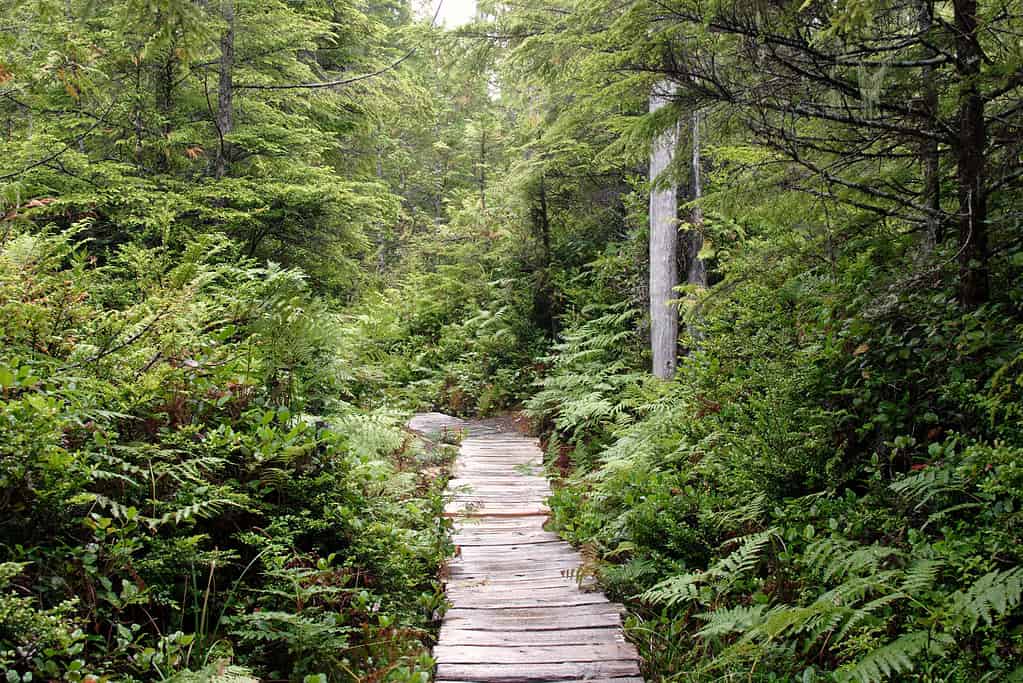
An elevated cedar boardwalk on the Ozette Loop hike provides a dry path through the forest understory.
©panacheart / CC BY 3.0 – License
Lake Ozette is a beautiful area in Washington State, known for its stunning coastal scenery and pristine wilderness. The area has several hiking trails, allowing you to wander from forest to coast.
Hiking enthusiasts will love the Ozette Loop, a nine-mile trail to the lake through lush forests and rugged coastline. You’ll be enchanted by the diverse flora and fauna along the way. For a more extended adventure, plan a backpacking trip to explore the numerous backcountry campsites. Set up your tent and fall asleep to the sounds of nature. If you prefer a more comfortable stay, nearby accommodations include cabins and lodges in towns like Forks.
How to Get There
To reach this scenic haven, head west on Highway 101 from Port Angeles, then take the Hoko-Ozette Road and follow signs to the trailhead. You have a few options when hiking near Lake Ozette.
Ozette Triangle Loop
Start at the Ozette Ranger Station, which is the trailhead for this loop. Hike the boardwalk through lush coastal forest for about 3 miles until you reach Sand Point, offering breathtaking views of the Pacific Ocean. From Sand Point, head south along the beach and explore tide pools and sea stacks. Continue down the coast for approximately 3 miles until you reach Cape Alava, the westernmost point in the contiguous United States. Head back to the trailhead by following the boardwalk and completing the loop.
Cape Alava to Sand Point
Start at the Ozette Ranger Station or the Lake Ozette Campgro for a shorter route. Follow the boardwalk to Sand Point or Cape Alava, depending on your starting point. Enjoy the coastal views and return the way you came.
Cape Alava to Wedding Rocks
Begin at Cape Alava trailhead. Hike south along the beach for approximately 1.5 miles until you reach Wedding Rocks. Explore the fascinating petroglyphs and intertidal life in this area. Return to Cape Alava the same way you came.
5. Alpine Lakes Wilderness
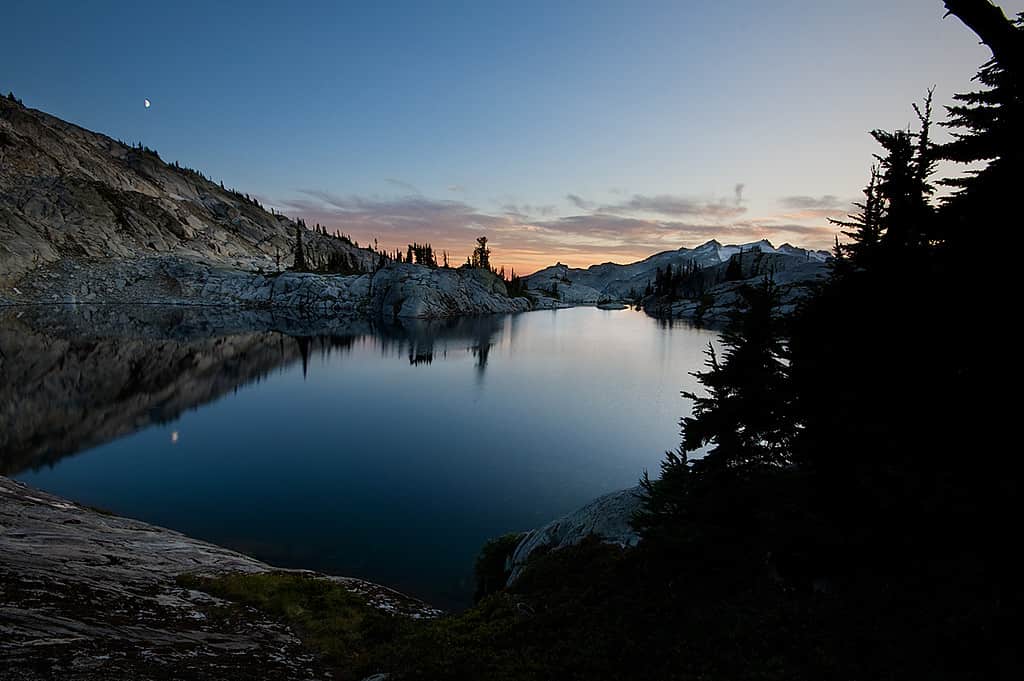
©Jeffrey Pang / CC BY 2.0 – License
Hiking in the Alpine Lakes Wilderness gives you access to over 700 remote mountain lakes and ponds.
Nestled within the rugged North Cascades, the Alpine Lakes Wilderness is a nature lover’s paradise just a stone’s throw from Seattle. Its pristine alpine lakes, towering peaks, and endless hiking opportunities make it a must-visit area for outdoor enthusiasts.
Camping in this wilderness is a true delight. Choose from established campgrounds or try backcountry camping to immerse yourself fully in nature. If you crave solitude and breathtaking alpine scenery, the Alpine Lakes Wilderness is your go-to destination. With various trailheads to choose from, lace up your hiking boots and plan an adventure you’ll never forget. There are endless hiking options, from beginner-friendly routes to challenging backcountry treks.
How to Get There
Before your adventure, secure a permit through the U.S. Forest Service or recreation.gov, especially if you plan to camp. Additionally, ensure you have any required passes for parking and overnight stays.
The most common access point for the Alpine Lakes Wilderness is the I-90 corridor. Take I-90 East. After about 50 miles, exit onto State Route 903 (Salmon la Sac/Teanaway). Follow this road for roughly 10 miles, where you’ll encounter multiple trailheads and access points into the wilderness. It’s important to note that the Alpine Lakes Wilderness is vast, with various entry points, so plan your specific trailhead or destination ahead of time.
6. Stehekin
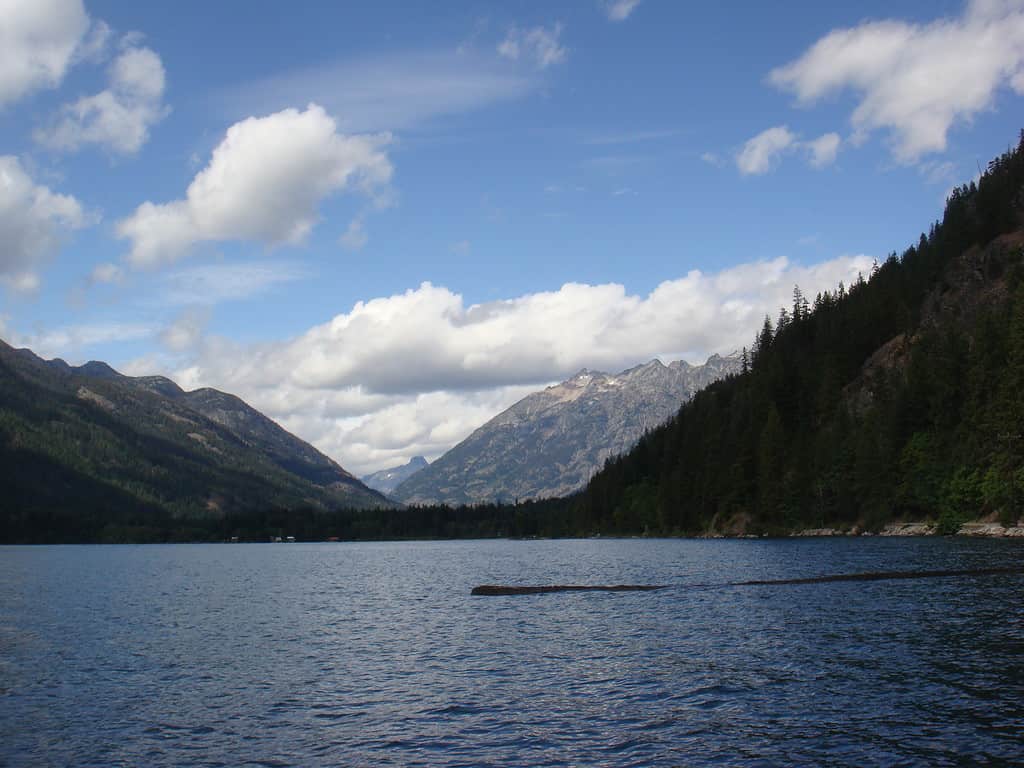
Nestled in a secluded valley at the headwaters of Lake Chelan, Stehekin is best accessed via a ferry.
©Mournlight / CC BY 3.0 – License
The town of Stehekin is so remote that the only way to reach it is by boat, seaplane, or hiking, as no roads connect it to the outside world. Stehekin is a hidden treasure for those seeking off-the-beaten-path adventures.
Once in Stehekin, you’ll find no cars, just bicycles and your own two feet for exploring. With the North Cascades National Park as your backyard, you’re in an ideal spot with endless options for hiking trails and visiting pristine lakes.
Stehekin’s welcoming community and rustic charm make it an ideal escape. Don’t miss visiting the famous Stehekin Pastry Company for their cinnamon rolls. Whether hiking, fishing, or unwinding, Stehekin is the perfect retreat for nature lovers.
How to Get There
To get there, catch one of the Lady of the Lake ferries from Chelan, WA, for a breathtaking cruise up Lake Chelan. There are two boats to choose from — one is a four-hour cruise, while the express ferry only takes two and a half hours to make the trip. Along the way, you’ll be treated to stunning vistas of the Cascade Mountains.
7. Nighthawk
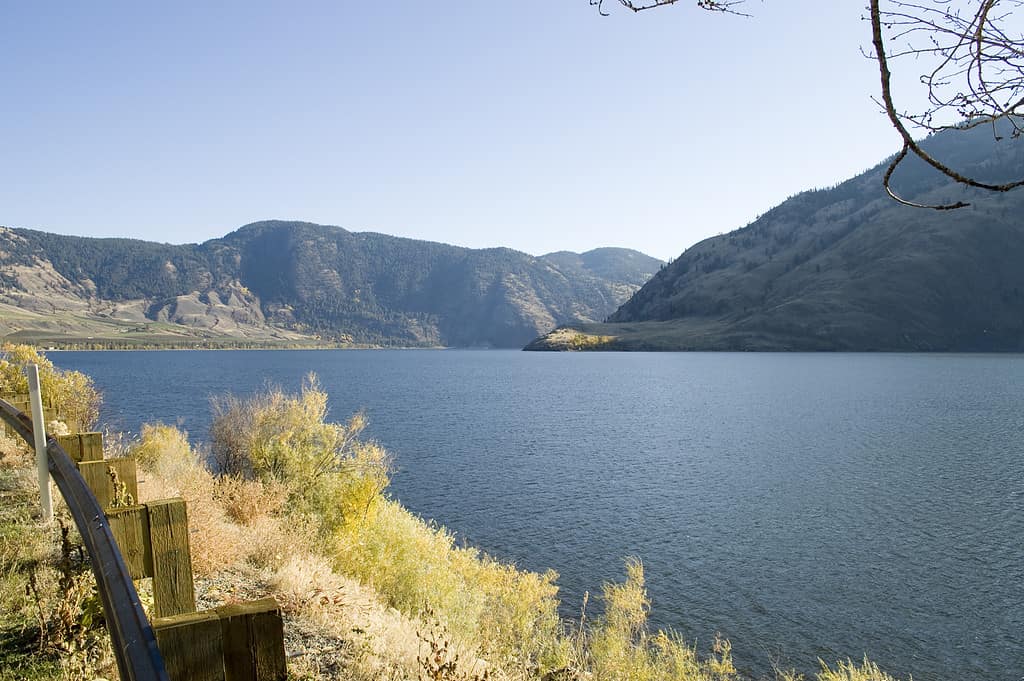
The remote spring-fed waters of Palmers Lake are great for fishing and non-motorized boating.
©A. Balet / CC BY 3.0 – License
Nestled in the picturesque Okanogan County of Washington State, the small town of Nighthawk promises an unforgettable adventure. This hidden gem is a delightful destination for explorers seeking tranquility with a historical element. Situated along the Canadian border, It is one of the quietest border crossings between the United States and Canada, allowing travelers to experience the historical charm of the region while passing through the international border.
Discover the Ghost Town of Nighthawk
A once-vibrant town in the gold rush era, Nighthawk is now a quiet ghost town. While the ghost town of Nighthawk may no longer echo with the sounds of a thriving community, it offers an intriguing glimpse into a bygone era. You can wander past abandoned structures that seem to whisper tales of ambitious miners and hopeful prospectors who sought their fortunes in the nearby hills.
Outdoor enthusiasts can enjoy the recreational activities available in the Nighthawk area. The Similkameen River and Palmer Lake are perfect for a leisurely paddle or fishing. The surrounding hills and trails invite hikers and bikers to explore the region’s rugged beauty.
How to Get There
Travelers typically take Highway 97, a well-known route that leads to the Canadian border. From Highway 97, take the turn onto Loomis-Oroville Road, immersing yourself in the breathtaking views of the surrounding hills and valleys. Follow the road until you reach the quaint town of Loomis. Once in Loomis, continue on State Route 20 East, venturing deeper into the heart of the region. Be prepared for winding roads that unveil panoramic vistas at every turn. Follow the well-marked signs until you reach Nighthawk.
8. Bogachiel State Park
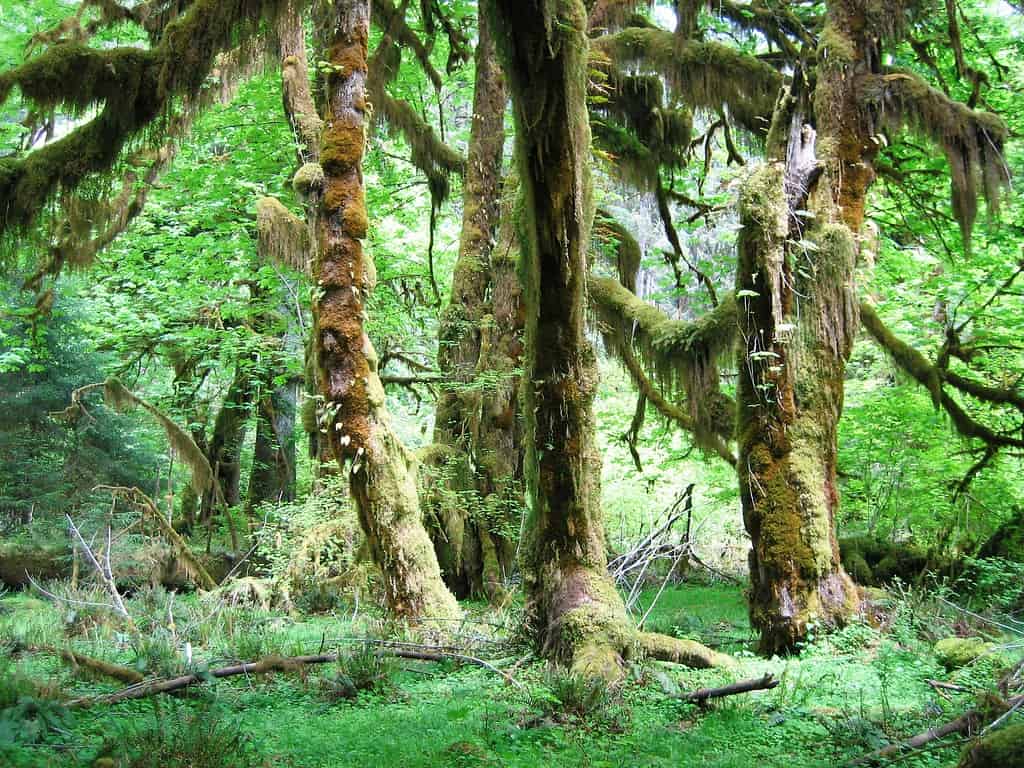
Bogachiel State Park is considered one of the most remote spots in the Olympic National Forest.
©Malonecr7 / CC BY-SA 3.0 – License
A nature lover’s paradise with its towering trees, pristine rivers, and the scent of pine in the air, Bogachiel State Park is one of the most remote camping spots in Washington. Moss-covered branches and ferns carpet the forest floor, painting a scene straight out of a fairy tale. This remote camping park is at the tip of the Hoh rainforest, positioning you in a serene location that gives you easy access to other attractions in the Olympic National Forest.
How to Experience the Park
The park offers visitors a network of scenic trails, perfect for every skill level. Take a leisurely stroll along the Bogachiel River Loop or challenge yourself with the Spruce Nature Trail. If you’re a camping enthusiast, this is one of the most remote camping spots in Washington that doesn’t require a strenuous hike. Pitch a tent at one of the well-maintained campsites and immerse yourself in the great outdoors. If you like fishing, don’t forget to bring your gear; the Bogachiel River is renowned for its excellent fishing. Bogachiel State Park is also a haven for wildlife enthusiasts, with opportunities for birdwatching and glimpses of deer and elk.
How to Get There
To reach Bogachiel State Park, head west on US-101 from Port Angeles, then take a left onto Undi Road. Follow the road to the park entrance, where adventure awaits.
| Location | How to Access | Appeal |
|---|---|---|
| Sucia Island Marine State Park | Boat-in access only – private boat or ferry service | A 564-acre marine park with camping, day use shelter, hiking trails, and opportunities for boating, fishing, scuba diving, and fossil viewing. |
| Hidden Lake Fire Lookout | Hike | A challenging hike ends at a historical fire lookout with panoramic view of snow-capped mountains. |
| Ross and Diablo Lake | Hike, boat, or water-taxi | Two remote lakes in the North Cascades, separated by a dam, offering secluded camping, fishing, and boating. |
| Lake Ozette | Drive through Olympic National Park, then hike one of Lake Ozette’s trails | The largest unaltered lake in Washington, offering boardwalk trails, coastal wilderness, bald eagle viewing, and marine mammal viewing. |
| Alpine Lakes Wilderness | Hiking | A remote wilderness area with pristine alpine lakes, towering peaks, and many hiking opportunities for various ability levels. |
| Stehekin | Boat-in access only by ferry or private boat | A remote town with no cars that is only accessible by boat, plane, or hiking in from the North Cascades Wilderness. |
| Nighthawk | Drive | A remote ghost town with nearby rivers, streams, and lakes. |
| Bogachiel State Park | Drive | A remote 127 acre camping park located at the tip of the Hoh Rainforest. |
The photo featured at the top of this post is © Ian Poellet / CC BY-SA 3.0 – License / Original
Thank you for reading! Have some feedback for us? Contact the AZ Animals editorial team.






